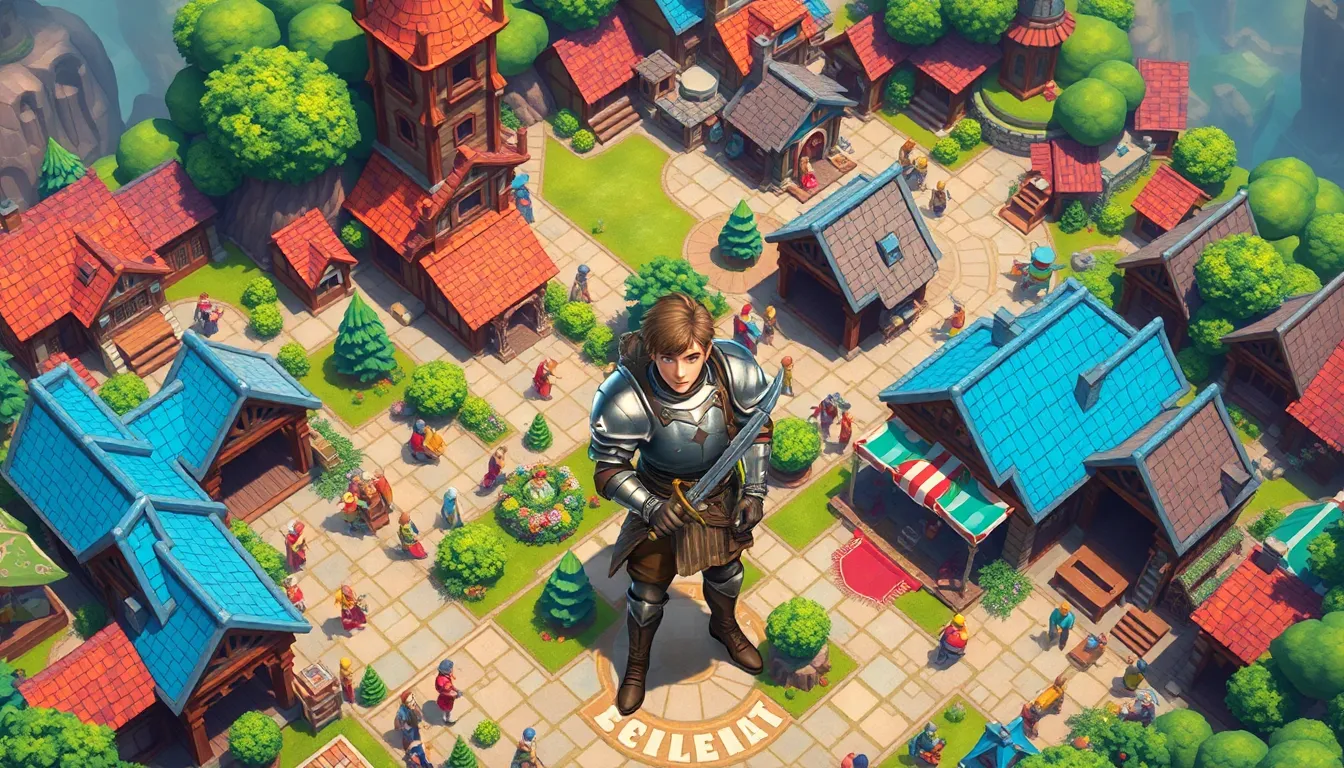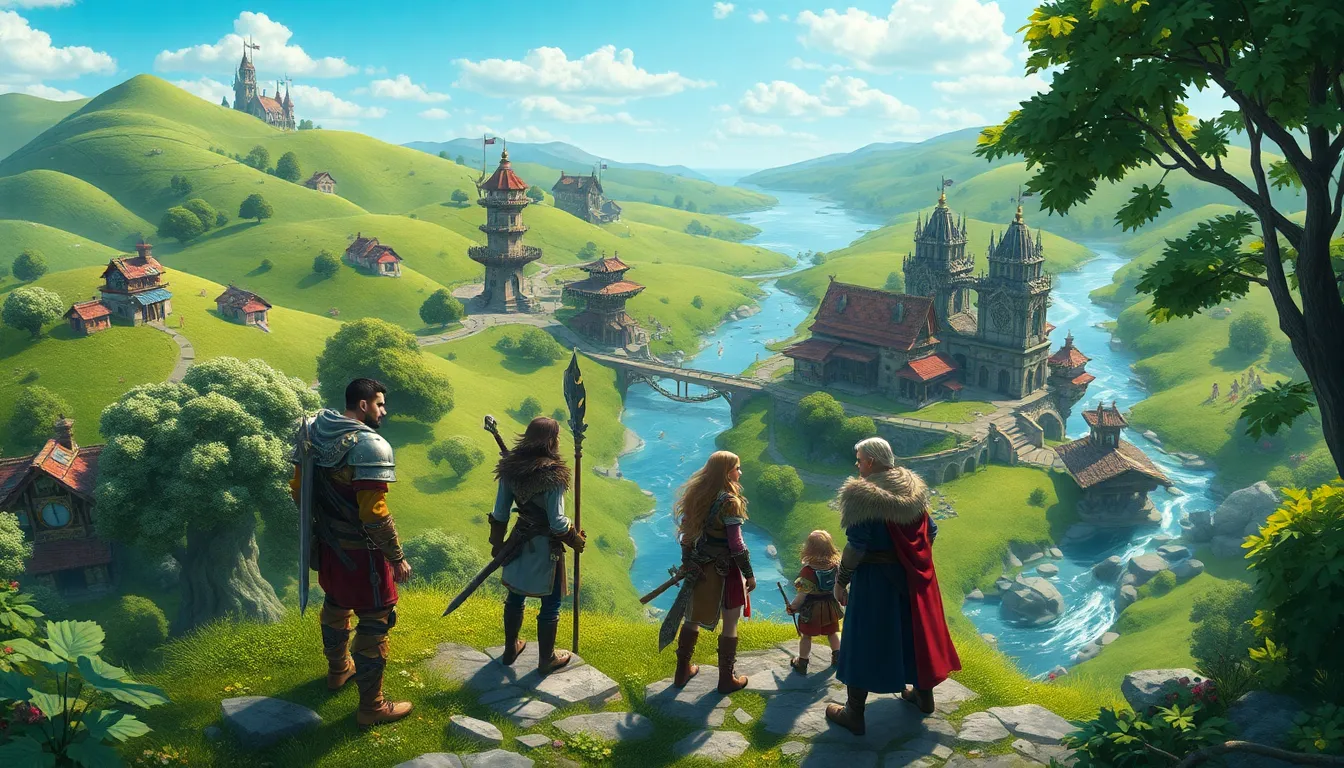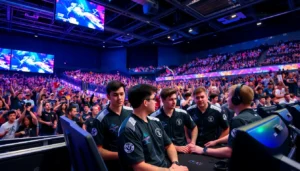Table of Contents
ToggleIsometric RPGs are like the cozy corner of a gaming café—inviting, familiar, and always packed with adventure. With their unique perspective and rich storytelling, these games transport players into worlds where strategy meets creativity. Imagine exploring lush landscapes while plotting your next move, all from a bird’s-eye view that makes you feel like a tactical genius, or at least gives you the illusion of one!
Whether you’re battling fierce monsters or forging alliances with quirky characters, isometric RPGs offer a blend of nostalgia and innovation that keeps players coming back for more. So if you’re ready to dive into a realm where every choice counts and laughter is just as important as leveling up, buckle up! The world of isometric RPGs awaits, and it’s about to get seriously fun.
Overview of Isometric RPG
Isometric RPGs represent a distinct genre in the gaming world. These games feature a fixed camera angle, typically set at an isometric view, which creates a three-dimensional perspective on a two-dimensional plane. Players navigate through intricately designed environments, exploring a mix of cities, dungeons, and wilderness.
The gameplay in isometric RPGs emphasizes tactical decision-making. Players engage in turn-based combat while utilizing the landscape for strategic advantages. Different character classes offer varied abilities and playstyles, encouraging diverse team compositions. Each character can develop unique skills and attributes, leading to rich customization options.
Many titles in this genre draw inspiration from classic RPGs, merging nostalgia with modern mechanics. Popular examples include “Baldur’s Gate” and “Diablo,” each delivering an immersive narrative experience alongside engaging gameplay elements. Social interaction and character relationships also play crucial roles, allowing players to form alliances and make impactful choices.
Isometric RPGs often incorporate skill trees and branching storylines. Skill progression enables characters to evolve based on player choices, enhancing replayability. Branching narratives lead to multiple endings, encouraging exploration of different paths.
Throughout these games, vibrant graphics and detailed artwork create captivating worlds that immerse players. Soundtracks contribute to the atmosphere, building emotional connections to the game’s universe. Overall, isometric RPGs continue to attract fans with their blend of strategy, storytelling, and exploration.
Key Features of Isometric RPG

Isometric RPGs showcase distinct features that set them apart. Engaging gameplay elements and striking visual styles attract players.
Visual Style and Graphics
Stunning graphics create immersive worlds in isometric RPGs. Detailed artwork illustrates rich environments, enhancing player exploration. Many games utilize vivid colors and intricate designs to draw attention. Iconic titles often feature a unique art style, like pixel art or hand-drawn imagery, providing a nostalgic feel. Environments are densely populated with interactive objects, encouraging players to fully engage with their surroundings. Soundtracks accompany these visuals, deeply enhancing the overall experience.
Gameplay Mechanics
Strategic gameplay mechanics define isometric RPGs. Players typically navigate through turn-based combat systems, encouraging thoughtful decision-making. Character customization is extensive, with options that allow for diverse classes and unique abilities. Skills trees offer a pathway for development, tailoring characters to fit individual playstyles. Additionally, players often encounter branching storylines where choices shape the narrative. Exploration rewards players with hidden treasures and quests, enriching the overall adventure. Engaging social interactions build connections, affecting gameplay and story dynamics.
Popular Isometric RPG Titles
Isometric RPGs showcase a rich array of titles, captivating players across generations.
Classic Games
“Baldur’s Gate” set a standard for isometric RPGs, featuring deep storylines and strategic gameplay. Players engage in tactical battles using party dynamics. “Planescape: Torment” emphasizes character development and dialogue, making choices impactful and meaningful. “Diablo” revolutionized the action RPG scene, blending isometric views with loot-driven gameplay. These classics offer timeless experiences that resonate with nostalgia while providing engaging mechanics.
Modern Releases
“Divinity: Original Sin 2” exemplifies modern isometric RPGs, combining robust storylines with co-op gameplay. Players customize characters and make decisions that alter the narrative. “Disco Elysium” stands out for its focus on dialogue and moral dilemmas, allowing players to shape their identities through choices. “Pathfinder: Kingmaker” enriches the genre with kingdom-building elements alongside traditional RPG mechanics. These recent titles continue to push the boundaries of storytelling and gameplay in isometric RPGs.
Design and Development Challenges
Creating an isometric RPG involves numerous design and development challenges. Developers face the task of balancing gameplay mechanics with engaging narratives. Crafting intricate environments is essential, as these landscapes serve as both the backdrop and a strategic element within the game. Collaborating with artists and designers ensures that graphic quality remains high, maintaining player immersion.
Character customization builds complexity into the design process. Developers must integrate skill trees that offer depth and variety while ensuring they remain user-friendly. Achieving this balance requires constant testing and iteration. Game balance also represents a significant challenge. Playtesting reveals how adjustments to characters’ abilities can impact overall gameplay dynamics.
Narrative design plays a crucial role in these titles. Writers need to create branching storylines that resonate with players while avoiding convoluted paths. Each decision players make should carry weight, influencing outcomes in a meaningful way. Ensuring that the dialogue and interactions feel authentic and immersive adds to this complexity.
Audio design also holds considerable importance. Quality sound effects and immersive soundtracks heighten the gaming experience. Developers often rely on talented composers to craft scores that evoke the desired emotions during critical moments.
Technical challenges cannot be overlooked in the realm of isometric RPGs. Optimizing performance across diverse platforms ensures a smooth experience for all players, regardless of device specifications. Addressing these challenges requires a collaborative approach among programmers, artists, and writers, as synergy remains key in successful isometric RPG development. By recognizing these design and development hurdles, creators can refine their games, allowing players to enjoy captivating worlds filled with rich stories and exciting gameplay.
Future of Isometric RPG
Isometric RPGs are evolving with technological advancements and player expectations. Creative developers push boundaries, experimenting with new gameplay mechanics and visual styles. Innovations in graphics technology enhance immersion, making environments more dynamic and lifelike.
Virtual reality and augmented reality integrations show promise, transforming the way players experience these games. Enhanced storytelling tools allow for deeper character interactions, offering players richer narratives. Game engines also improve efficiency in development processes, enabling the creation of intricate worlds without sacrificing performance.
Player feedback shapes the future of isometric RPGs significantly. Developers continually adapt designs to meet community demands, ensuring that gameplay remains engaging. Expanding multiplayer experiences can enhance collaboration, allowing players to explore and strategize together.
Crowdfunding and early access models empower indie developers, introducing fresh concepts and diverse narratives. These platforms provide opportunities for innovative ideas that challenge traditional mechanics. Investing in community-driven game development fosters a more inclusive environment, attracting a wider audience.
Crossover content between genres increases visibility and appeal, integrating RPG elements into action or puzzle games. Experimenting with different genres can attract diverse player demographics, expanding the player base. More robust modding communities will likely emerge, enabling players to create their own content, enhancing replayability.
Trends indicate that inclusivity and diversity will become central themes in future releases. Developers will look to create characters and worlds that reflect various backgrounds and experiences. Overall, isometric RPGs stand poised for continued growth, blending strategy, storytelling, and community engagement into an inviting gaming landscape.
Isometric RPGs continue to captivate players with their unique blend of strategy and storytelling. Their distinctive perspective allows for immersive exploration and tactical gameplay that keeps gamers engaged. As the genre evolves with technological advancements and player feedback, the future looks promising.
Developers are embracing innovation while honoring the nostalgia that defines isometric RPGs. The focus on inclusivity and diverse narratives will likely enrich player experiences, fostering a deeper connection to the characters and worlds. With a growing array of titles pushing boundaries, isometric RPGs are set to remain a beloved genre for years to come.




